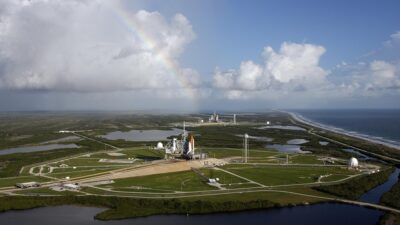The tech landscape is always evolving, and events like Microsoft Build provide a crucial glimpse into the future of software development. As developers, entrepreneurs, and tech enthusiasts gather to explore the latest tools and innovations, Microsoft continues to set the stage for how software is built, deployed, and consumed. This year’s Build conference highlighted several key developments that are poised to reshape the development landscape.
A New Era of Developer Tools
One of the most exciting announcements from Microsoft Build is the enhanced suite of developer tools designed to streamline coding, improve collaboration, and increase productivity. Central to this is Visual Studio Code, which has become a universal favorite among developers for its flexibility and plugin ecosystem. With the recent integration of AI-assisted coding features, such as IntelliCode, developers can expect a more intuitive coding experience. By leveraging machine learning algorithms, IntelliCode offers context-aware suggestions that accelerate coding speed and reduce errors.
GitHub Integration: Empowering Collaboration
Microsoft’s acquisition of GitHub has proved transformative, not just for Microsoft, but for the entire developer community. At Build, new features aimed at enhancing collaboration were unveiled. GitHub Codespaces, an in-browser development environment, allows teams to collaborate in real-time, making it easier to onboard new developers or work across different platforms. With integrated environments, developers can dive straight into coding without setting up the entire local development environment, thus saving time and reducing friction.
The Rise of Cloud-Native Development
As businesses increasingly migrate to the cloud, Microsoft has positioned Azure as a leading platform for cloud-native development. New tools introduced during Build focus on simplifying the deployment and management of cloud applications. Azure Containers and Kubernetes services have been enhanced, offering developers more options for scalable application architecture.
Low-Code and No-Code Solutions
The rise of low-code and no-code platforms was a recurring theme at Build. Microsoft Power Platform represents a significant shift toward democratizing app development, empowering non-developers to participate in the software creation process. This is particularly important as businesses look to solve complex problems without needing extensive technical skills. The combination of automation, data integration, and artificial intelligence in tools like Power Apps and Power Automate means anyone can create applications that meet specific business needs quickly and efficiently.
The Future of AI in Development
Artificial intelligence (AI) is another critical focus at this year’s Build. Microsoft’s Azure AI services are designed to make adopting AI technologies straightforward for developers. From machine learning models to natural language processing tools, the possibilities are vast. With the growing emphasis on ethical AI, Microsoft is committed to providing resources for developers to build responsible and inclusive applications.
Enhanced AI tools such as Azure Cognitive Services enable developers to incorporate advanced AI capabilities into their applications without requiring extensive knowledge of AI algorithms. This lowers the barrier to entry for businesses looking to leverage AI and creates a new wave of opportunities for innovation.
Security and Compliance
In a world where data breaches are increasingly common, Microsoft has placed a strong emphasis on security during Build. This includes updates to Azure Security Center and new compliance tools that enable developers to build applications with security at the forefront. These improvements are not only essential for maintaining client trust but also for adhering to an ever-evolving landscape of regulatory requirements.
Conclusion: A Bright Future for Developers
Microsoft Build illustrated a commitment to transforming development through innovation and collaboration. By advancing tools that enhance productivity, streamline collaboration, and empower a wider range of creators, Microsoft is helping shape a future where technology is more accessible and effective.
For developers, whether seasoned professionals or newcomers, the tools and ideas emerging from this year’s Build conference provide a foundation for informed, efficient, and creative software development. As the industry evolves, embracing these changes may be the key to not just surviving but thriving in an increasingly competitive landscape.



